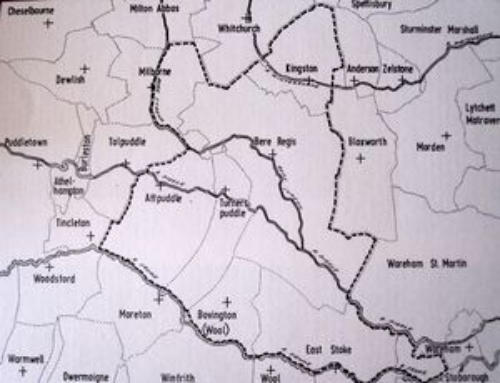The hundreds continued to form the basis for all official surveys and lists until comparatively recent years, at least until about 1880, but they underwent many boundary changes during this time.
For example, the original Bere Hundred became divided into two when the southern portion seceded, as it were, and Affpuddle, Turnerspuddle, Shitterton and Hyde, besides Bovington and parts of East Stoke became Barrow Hundred.
It is perhaps of interest that of all the Dorset place names occurring in the Domesday survey, only two, Frome (Vauchurch) and Bere are spelt as at the present time.
From early Saxon times, certain manors belonged exclusively to the Crown without an intervening tenant or sub-tenants and were known as Royal Demesne.
There were about 30 of such manors in Dorset and Bere was one of them. As Royal Manors they did not come under the jurisdiction of the Hundreds and were not of course liable to tax, so that they are not listed individually in either the Geld Rolls or the Domesday Survey, but are dealt with collectively in six groups.
These six groups of Royal Demesne are in neither alphabetical nor geographical sequence, as Bere occurs in the second group together with Bridetone (Burton Bradstock), Colesberie (part of Sturminster Newton), Sepetone (Shipton Gorge), Bratepolle (Badpole), Cidihoc (Chideock) and parts of Whitchurch Canonicorum and Kingston Russell.
In both the Geld Rolls and the Domesday Survey the main unit of area used is the Hide.
It was not strictly a measurement of area, but meant rather a farmstead unit and was a sufficient amount of land to employ a team of oxen.
The Hide was subdivided into four virgates or 48 acres (i.e. 1 Hide = 4 Virgates and 1 Virgate = 12 Acres). As the area of the hide seems to have varied from Hundred to Hundred, there is no exact modern equivalent, but it is usually taken as equal to about 120 modern acres (48 hectares).
A Domesday acre is thus seen to be approximately a hectare.
The Hundreds were probably originally so called because they contained 100 Hides or Farmsteads and would account for the larger size of those Hundreds which contained large areas of uncultivated heathland, as such unused areas were neither scheduled nor taxed.



